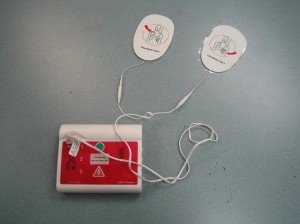Sudden cardiac arrest is basically a condition where the heart abruptly and unpredictably stops beating. The moment this occurs, the flow of blood stops to the brain as well as to the vital organs. The condition can lead to death in just a matter of minutes if it is not treated right away.
Understanding sudden cardiac arrest
The best way to fully understand the condition is to be familiar on how the heart functions. It is a known fact that the heart has an electrical system that regulates the rate and rhythm of the heartbeat. Any problems with this electrical structure can result to irregular heartbeats called as arrhythmias.
There are certain types of arrhythmias in which the heart can slowly beat, rapid pace or irregularly. Some can even cause the heart to cease pumping blood to the body, resulting to sudden cardiac arrest.
The condition is not similar to a heart attack. A heart attack occurs if the flow of blood to the part of the heart muscle is blocked yet the heart does not stop beating. As for sudden cardiac arrest, it can occur after or during recovery from a heart attack. Individuals who are suffering from heart problems face a higher risk for the condition. Nevertheless, it can also occur among individuals who are healthy and do not have any heart disease or other risk factors for sudden cardiac arrest.
Outlook for sudden cardiac arrest
Majority of individuals who experienced the condition died from it in just a matter of minutes. This is why fast treatment of the condition using an AED can help save a life. The device basically delivers an electric shock directly to the heart in an attempt to restore the normal rhythm of the heart.
An AED can be used by bystanders to save lives of those who are having sudden cardiac arrest. These devices are readily available in public places such as airports, hotels, sports venues and schools.
Signs and symptoms of sudden cardiac arrest

In most cases, the initial sign of a sudden cardiac arrest is the loss of consciousness. At the same time, there is no pulse present.
In some individuals, they have a racing heartbeat or feel lightheaded right before they faint. Within an hour before the condition occurs, some experience chest pain, nausea or vomiting and shortness of breath.
How sudden cardiac arrest is treated?
The condition is considered as an emergency. An individual with sudden cardiac arrest must be treated with an AED right away. The device delivers a shock to the heart in order to restore the normal rhythm.
It is important to provide CPR to an individual experiencing the condition until an AED is available and can be used. Those who are prone to the condition must have the device readily available at home. With this in mind, you should consider buying an AED for home use.
